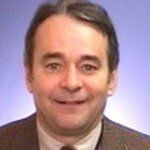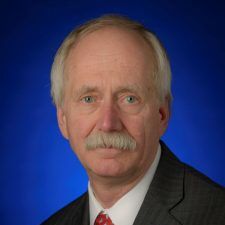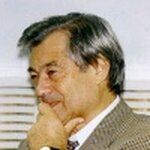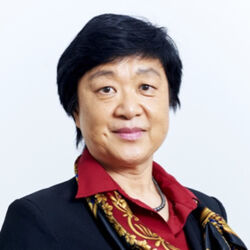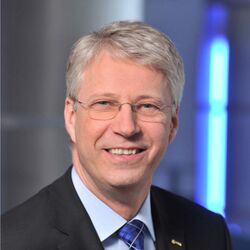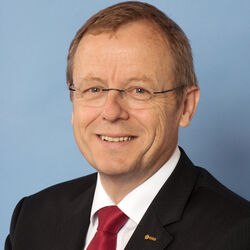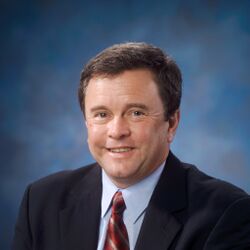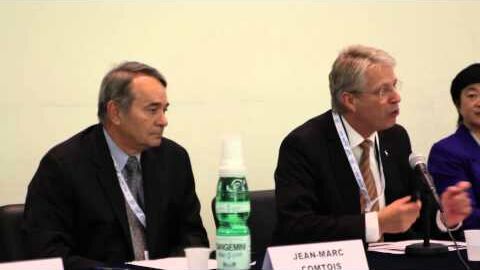Plenary 4: Improving the Quality of Life on Earth Societal Impacts of Human Space Flight
October 3rd 2012, 09:00 – 10:00
William Gerstenmaier, Associate Director, Human Exploration and Operations Mission Directorate, NASA, said “tremendous benefits” were accruing from research in space on the International Space Station (ISS).
And he urged the space community at large – represented by several hundred delegates attending the Plenary session – to help develop and promote this further to a wider public.
Gerstenmaier illustrated various experimental and technological developments on the ISS, including the latest generation space robotics in the form of Robonaut and Dextre (the Special Purpose Dexterous Manipulator, a two armed tele-manipulator which is part of the Mobile Servicing System on the ISS and replaces some activities otherwise requiring spacewalks).
He explained that technical benefits from space now extended into such diverse fields as aviation and water filtration systems, and to the development of plastic-like metals for jewellery and sporting goods.
“It is up to us as a community to get creative and clever on what kind of experiments we can do in space,” he stated.
Johann-Dietrich Worner, Chairman of the Executive Board, German Aerospace Center (DLR), suggested that identifying the key global challenges would help in determining the type of benefits space might deliver to the world in the future.
He spoke on the philosophical and motivational aspects of space exploration and said cooperation between nations beyond the bounds of Earth was an often over-looked gain from space exploration.
Summarising the benefits of human spaceflight, he said it had become part of “our heritage” and had delivered many dividends including international cooperation, medical research and a growing synergy between humans and robotics.
For the future, he also suggested that it was necessary to think about extending ISS involvement to more international partners.
Chiaki Mukai, astronaut and Vice-Director for Human Space Systems and Utilisation Mission Directorate at JAXA, said that the ISS had presented a great opportunity for the rapid development of medical and physiological research.
She said this was having a wide-reaching and positive impact on improving the quality of life for many people.
Thomas Reiter, Director of Human Spaceflight and Operations at ESA, described aspects of Europe’s advanced life sciences and physical sciences programme.
“The micro gravity environment of low Earth orbit offers unique opportunities to study health problems relating to ageing and immobility because observing physiological changes in astronauts living in orbit provides important clues to the ageing process on Earth,” he explained.
Other areas of benefits include better understanding of biochemical processes in plant growth, which has a direct impact on agricultural processes on Earth and so helps to develop plants that are more drought and disease resistant.
Reiter concluded by stressing the importance of education initiatives based around activities on the Space Station. “These are not easily measured in terms of financial turnover but are invaluable in engaging young people the world over,” he added.
Jean-Marc Comtois, Director, Astronauts, Life Science and Space Medicine, of the Canadian Space Agency (CSA), said that technologies developed to help people survive and work efficiently in the extremes of space were also helping in extreme and remote environments on Earth.
He cited the example of Microflow, a rugged point-of-care medical diagnostics package that was now being used by many large hospitals and in remote locations.
Canada is well-known and respected for its robotics expertise and Comtois added that his country’s work on Canadarm 2 had been instrumental in reducing the costs and development time for NeuroArm, a new kind of surgical robot which benefits patients by offering highly accurate and less invasive forms of surgery.
Anatoli Grigoriev, of the Russian Federation Institute for Biomedical Problems (IBMP), Federal Space Agency (ROSCOSMOS), said a large amount of valuable medical knowledge had been amassed over the past three decades through work with orbiting cosmonauts.
“We are now using more and more devices originally developed for space medicine and subsequently adapted for use with patients on Earth,” he said.
Grigoriev also illustrated a recently developed clinical loading suit, called Regent, which is bringing benefits to people needing rehabilitation after strokes and neurological trauma of different kinds.

